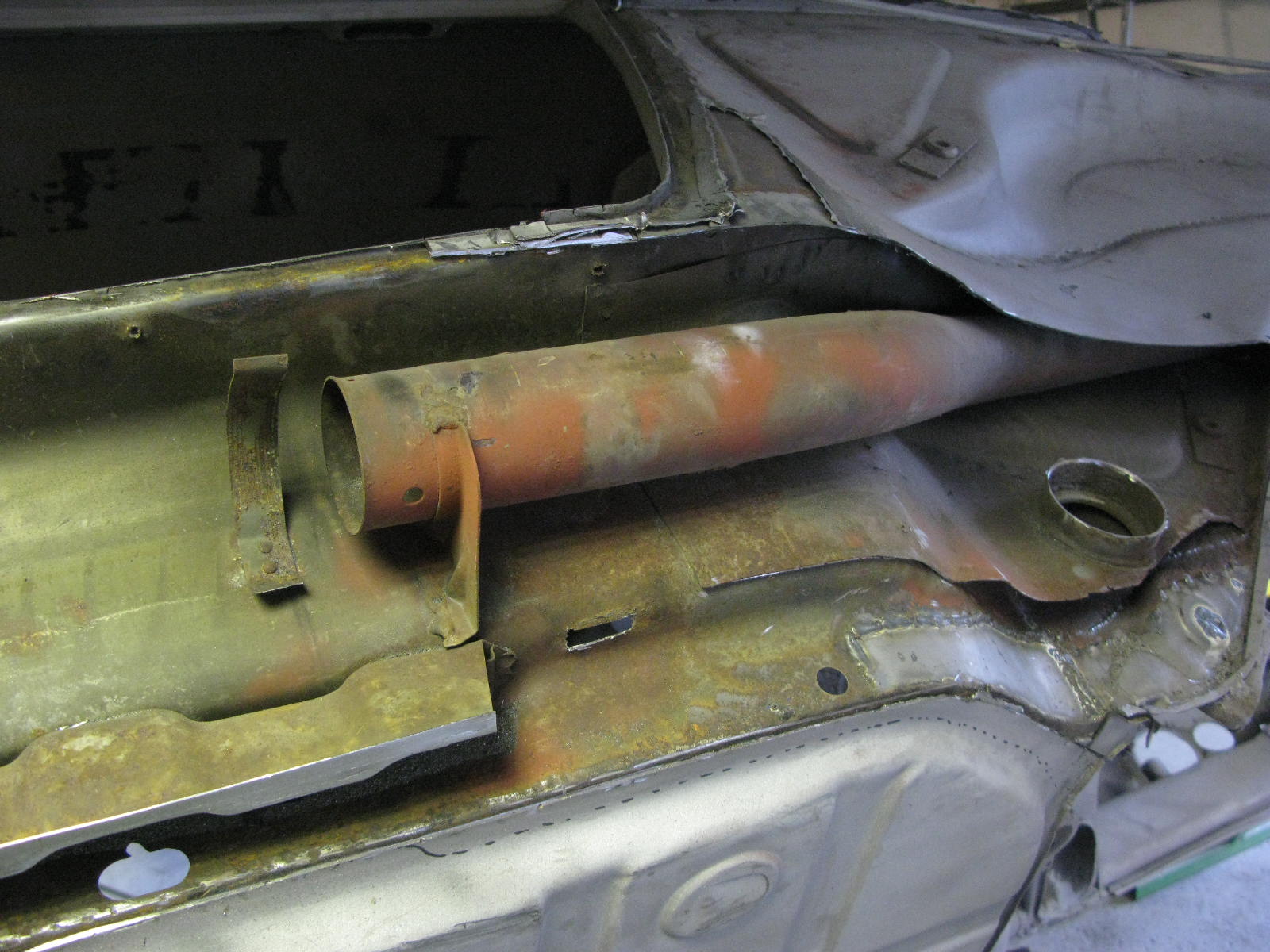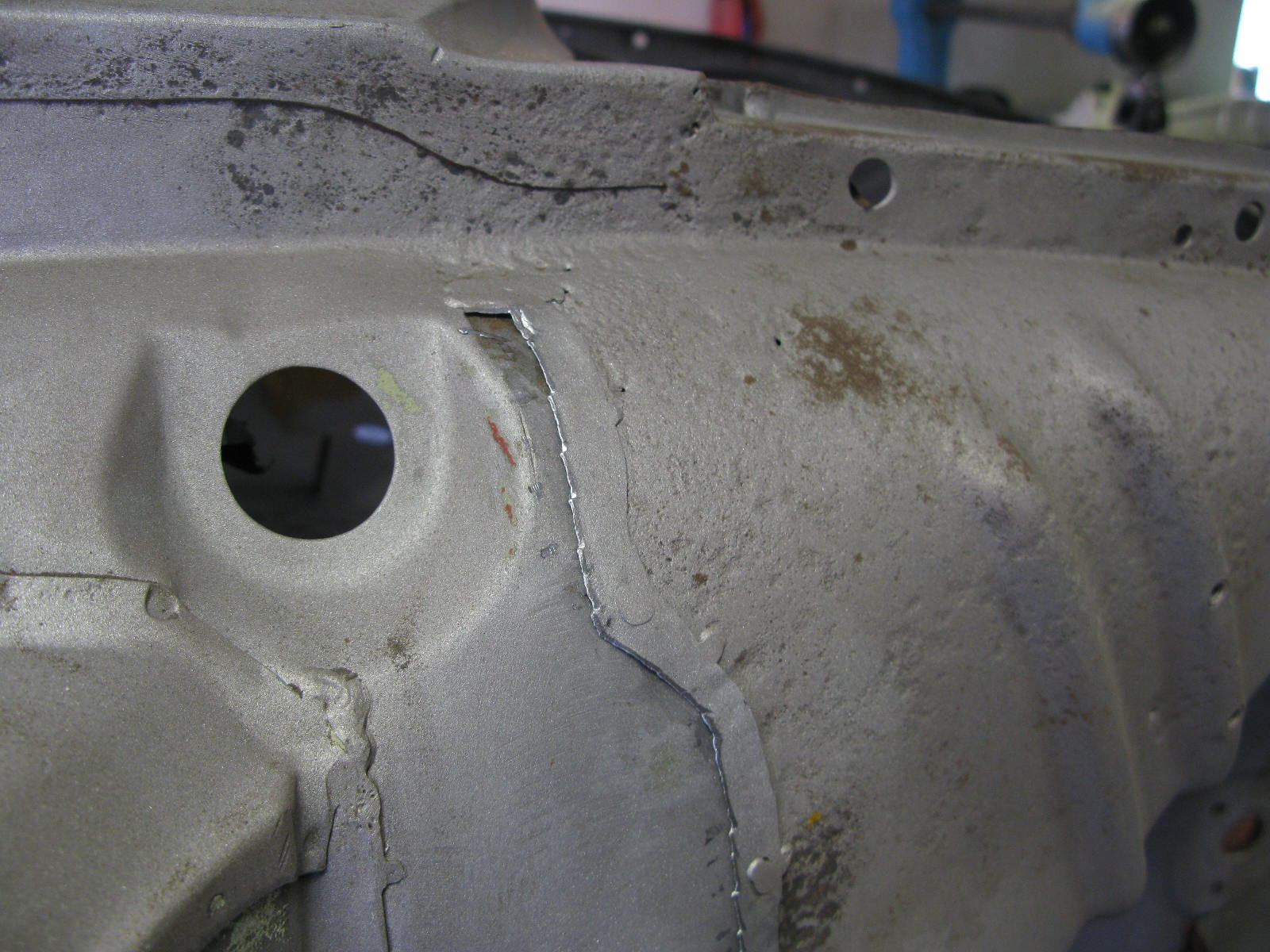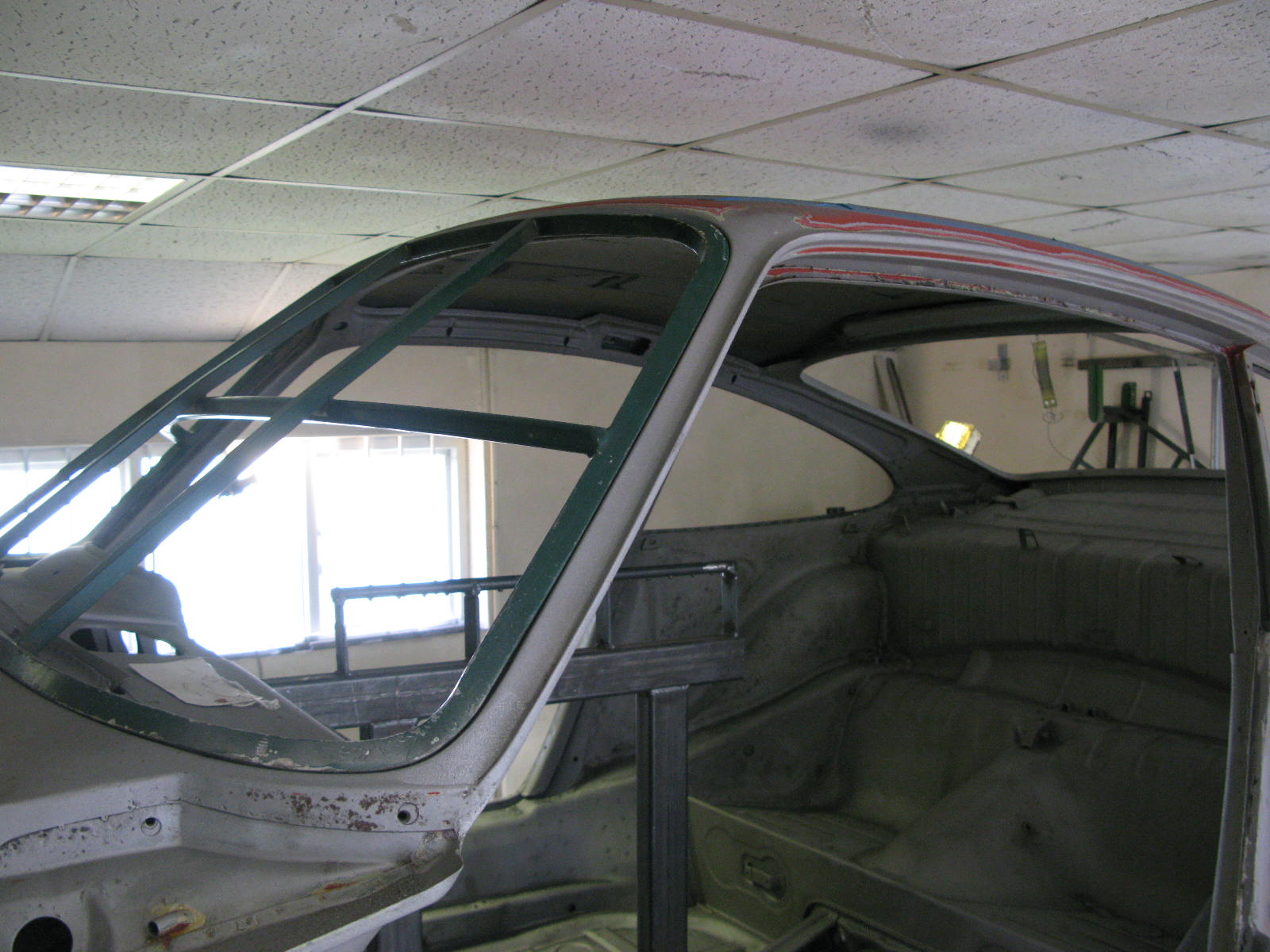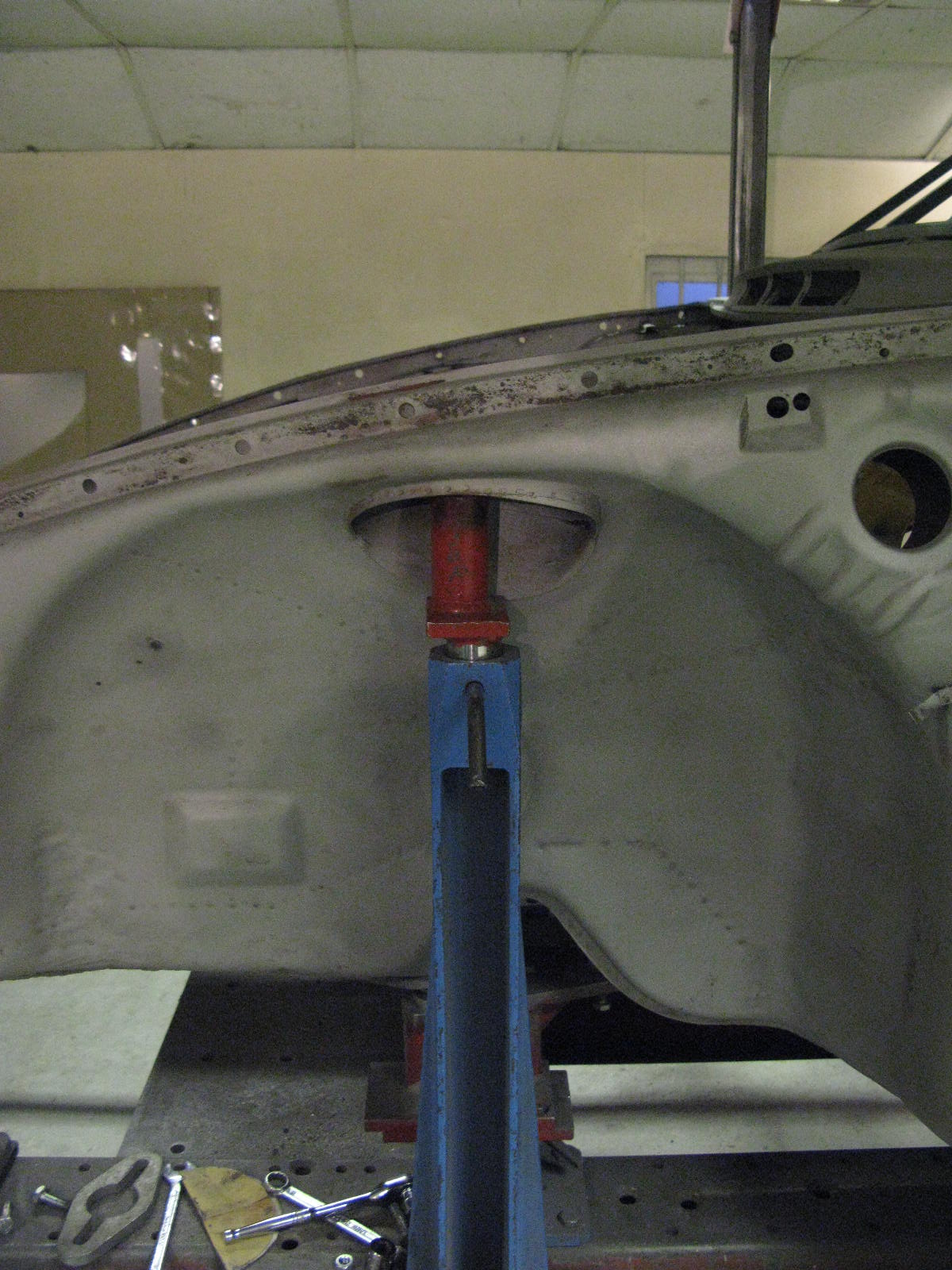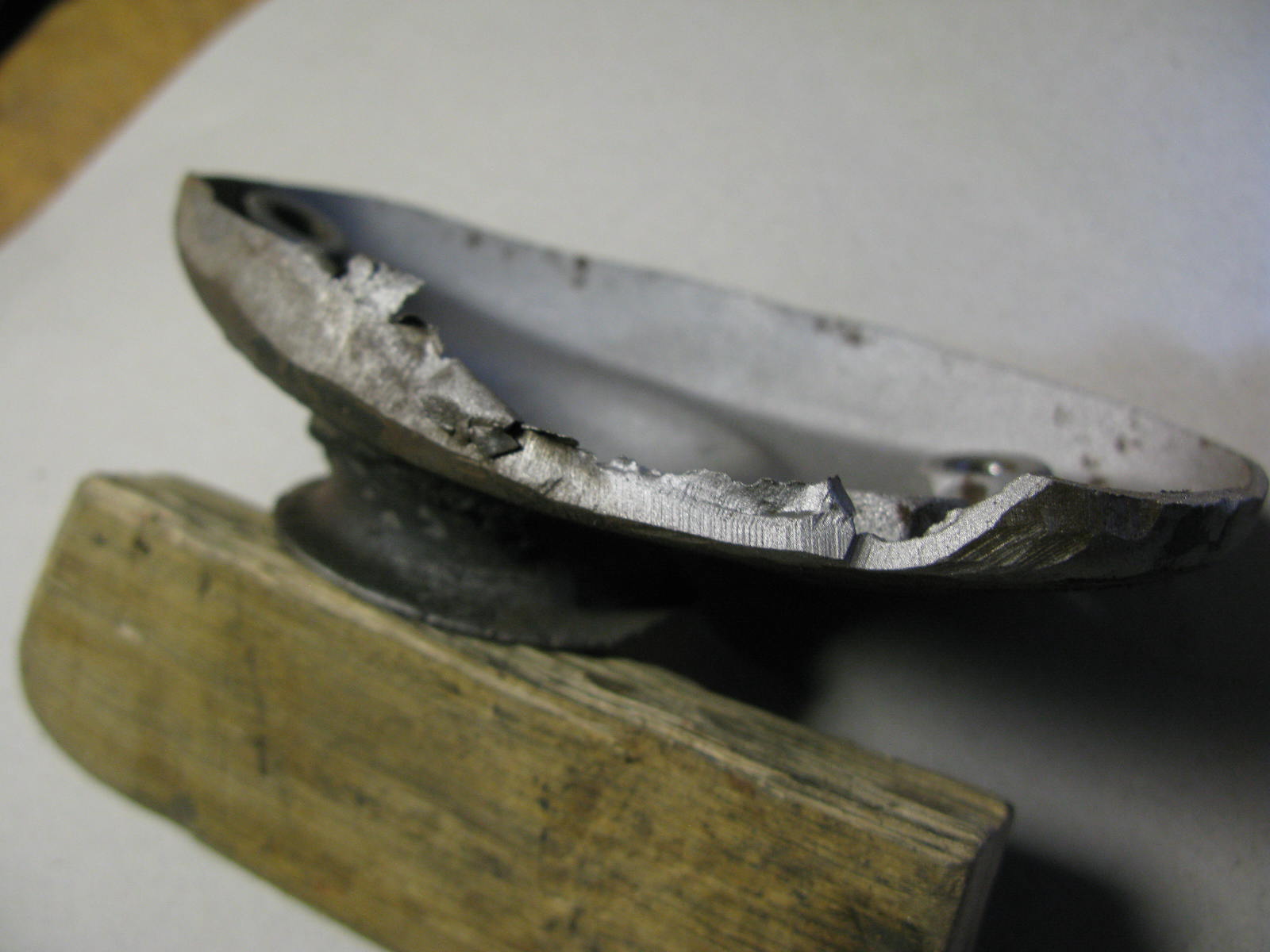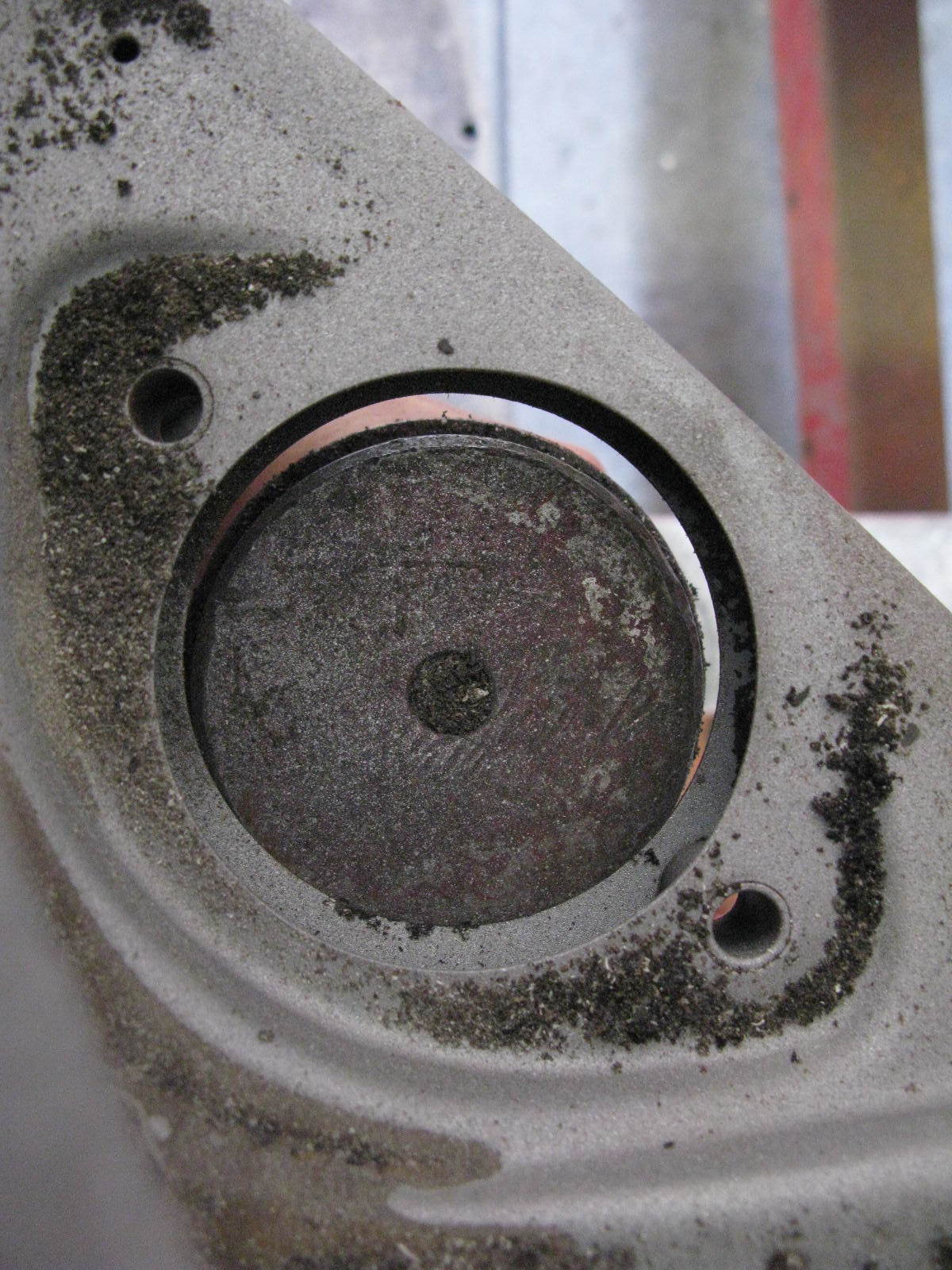Barry says:
I measured the existing replacement floor edge, and it was projecting about 1/4in too far out at the front, and about the same distance inwards at the rear. Further down the line this would have caused a lot of problems with the outer sill to door gaps.
After a bit of a battle it was removed without going too far backwards on the good original metal. Note that the seat mounting reinforcement panel had only been welded on with three welds, rather than the 15-20 it should have had.
The whole area must have been 'as found' last time, as no attempt had been made to tidy it up, let alone paint it. I've set to with wire brushes, Scotchbrite and emery, and just about tidied it up. Once the area is welded up and ready for its new floor edge, I'll go in with the first hit of paint. Once the floor is dealt with, and just before the new middle sill goes in, it'll get another dose of etch.







